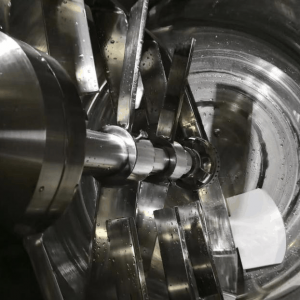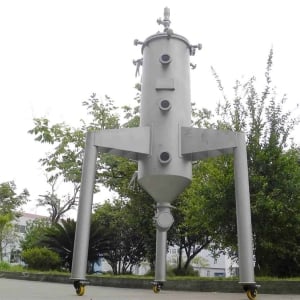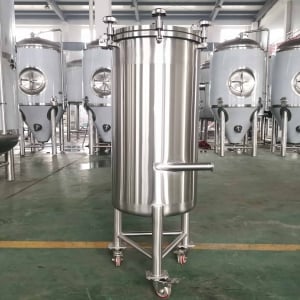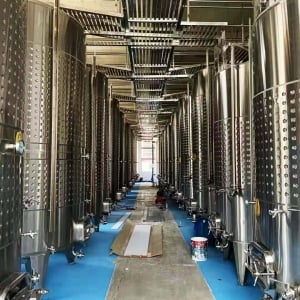vessel brewing system
Crafting beer at home allows you to experiment with flavors, personalize your favorite brews, and enjoy the satisfaction of creating a delicious beverage from scratch. But for those new to the world of homebrewing, the equipment can seem daunting. This guide dives deep into vessel brewing systems, exploring the different types, their functionalities, and the brewing process itself. Whether you’re a seasoned homebrewer or just starting your journey, this comprehensive resource will equip you with the knowledge to confidently navigate the world of vessel brewing systems.
Overview: Demystifying Vessel Brewing Systems
A vessel brewing system is the heart of your home brewery. It’s a collection of interconnected containers specifically designed to streamline the beer-making process. These systems can range from single kettles with all-in-one functionalities to multi-vessel setups that offer more control over each brewing stage.
Here’s a breakdown of the core functions a vessel brewing system performs:
- Mashing: Grains are steeped in hot water to convert starches into fermentable sugars.
- Lautering: The sweet liquid (wort) is separated from the spent grains.
- Boiling: The wort is boiled to extract flavors and aromas from hops, and to sterilize the liquid.
- Whirlpooling: The wort is spun to create a clarified liquid for fermentation.
Choosing the right vessel brewing system depends on your experience level, desired level of control, batch size, and budget.

Types of Vessel Brewing Systems
There are three main categories of vessel brewing systems, each with its own advantages and limitations:
| Type | Description | Pros | Cons |
|---|---|---|---|
| Single Vessel (BIAB) | A single kettle equipped with a grain bag for steeping grains. | Simple, affordable, space-saving. | Less control over mashing temperature, potential for lower efficiency. |
| Two Vessel (2V) | Consists of a kettle for boiling and a lauter tun for mashing. | More control over mashing temperature compared to BIAB, good efficiency. | Requires transferring hot liquid between vessels, additional equipment needed. |
| Three Vessel (3V) | Includes a dedicated kettle for boiling, a lauter tun for mashing, and a hot liquor tank (HLT) for maintaining mashing temperature. | Highest level of control over the brewing process, excellent efficiency. | Most expensive option, requires the most equipment and workspace. |
Additional Considerations:
- Electric vs. Gas: Electric systems are user-friendly and precise, while gas offers faster heating times.
- Volume: Consider your desired batch size and available space.
- Material: Stainless steel is the most common and durable material for brewing kettles.
The Brewing Process with a Vessel System
Now that we’ve explored the different types of vessel systems, let’s delve into the brewing process itself:
- Mashing: Grind your grains and add them to the mash tun (or kettle for BIAB systems) with hot water. Maintain a consistent mash temperature for a designated period to allow enzymes to convert starches into sugars.
- Lautering: Separate the wort (sugar-rich liquid) from the spent grains. In a 2V or 3V system, this involves transferring the mash to the lauter tun and using gravity or a pump to collect the wort. In a BIAB system, the grain bag is lifted from the kettle, allowing the wort to drain.
- Boiling: Transfer the wort to the kettle and bring it to a boil. Add hops at specific intervals to introduce bitterness, aroma, and flavor. Boiling also sterilizes the wort and concentrates the sugars.
- Whirlpooling: Create a whirlpool motion in the wort to settle out hop particles and other trub (sediment). This clarifies the wort for a cleaner final product.
- Cooling: Chill the wort rapidly to a designated temperature for pitching yeast.
- Fermentation: Transfer the cooled wort to a fermenter, add yeast, and allow it to ferment for several days. During fermentation, yeast consumes sugars and produces alcohol and carbon dioxide.
- Bottling/Kegging: Package the finished beer into bottles or kegs for carbonation and enjoyment.
Vessel Brewing System Features to Consider
Beyond the basic functionality, several features can enhance your brewing experience:
| Feature | Description | Benefit |
|---|---|---|
| Digital Temperature Control | Precise control over mash and boil temperatures. | Crucial for consistent and high-quality brews. |
| Grain Basket | A mesh container for steeping grains in a single vessel system. | Simplifies lautering in BIAB setups. |
| Pump | Transfers hot liquids between vessels efficiently. | Reduces manual lifting of heavy kettles. |
| Plate Chiller | Rapidly cools wort for fermentation. | Saves time and improves beer quality. |
| Counterflow Wort Chiller | Cools wort while simultaneously heating water for the next mash. | Improves efficiency and reduces water usage. |
| Automataion Systems | Integrated systems control temperature, pumps, and timers for a hands-off brewing experience. | Ideal for experienced brewers seeking maximum control and repeatability. |
Vessel Brewing System Capacity, Space, Design, and Layout
When selecting a vessel brewing system, consider these factors to ensure it fits your needs and brewing space:
| Factor | Description | Key Points |
|---|---|---|
| Capacity | Desired batch size (volume of beer produced in one brewing session). | Homebrew systems typically range from 1 gallon to 50 gallons. |
| Space | Available space in your brewing area. | Measure your designated brewing area to ensure the system fits comfortably. |
| Design | Material, aesthetics, and overall functionality. | Stainless steel is the industry standard, offering durability and ease of cleaning. |
| Layout | How the kettles and equipment are arranged for efficient workflow. | Consider gravity flow between vessels and ease of access for cleaning. |
| Customization | Ability to add additional components like pumps, chillers, or automation systems. | Choose a system that allows for future expansion as your brewing skills progress. |
Vessel Brewing System Suppliers and Price Range
Here’s a glimpse into some popular vessel brewing system suppliers and their price ranges:
| Supplier | System Type | Price Range (USD) |
|---|---|---|
| Brewzilla | Single Vessel (BIAB) | $300 – $500 |
| Grainfather | Single Vessel (BIAB) | $400 – $800 |
| Blichmann Engineering | Two Vessel (2V) & Three Vessel (3V) | $2,000 – $10,000+ |
| Ss Brewtech | Two Vessel (2V) & Three Vessel (3V) | $1,500 – $7,000 |
| Brewmaster | Two Vessel (2V) & Three Vessel (3V) | $1,000 – $5,00 |
Please note: Prices are approximate and can vary depending on features, size, and retailer.
Installation, Operation, and Maintenance
While most vessel brewing systems come with detailed instructions, here’s a general overview of installation, operation, and maintenance:
- Installation: Typically involves assembling the stand, attaching valves and hoses, and ensuring proper electrical connections (for electric systems).
- Operation: Follow the manufacturer’s instructions for each brewing step, paying close attention to temperature control and sanitation procedures.
- Maintenance: Regularly clean your system after each brew day. This includes washing kettles, hoses, and valves with hot water and sanitizer. Deep cleaning may be necessary periodically depending on usage.
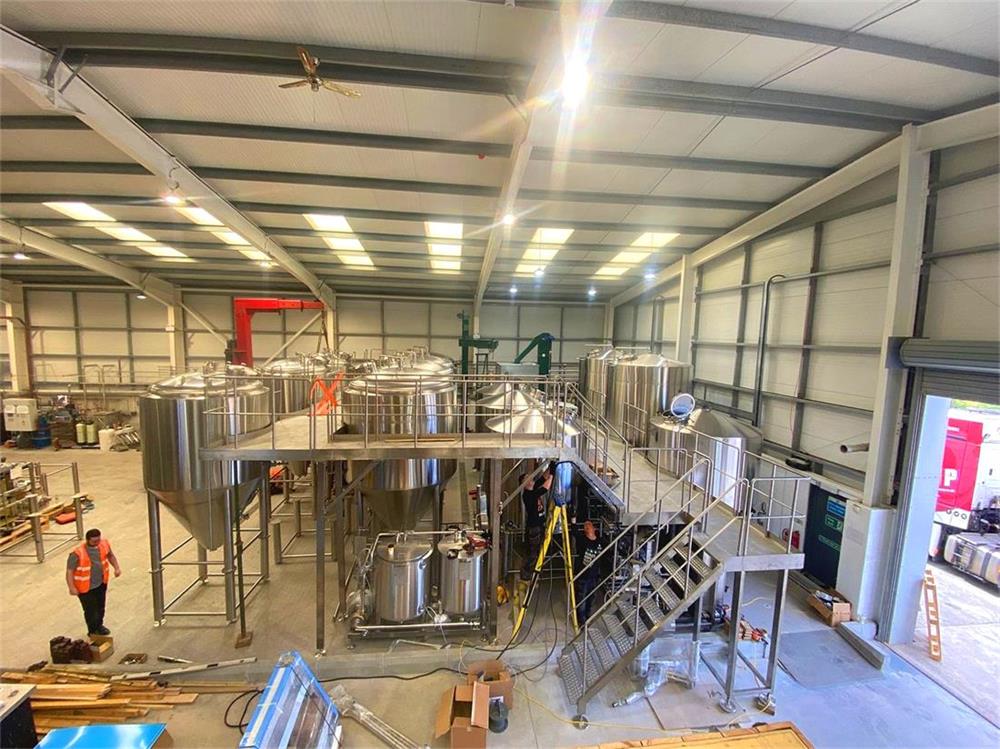
Choosing the Right Vessel Brewing System
Selecting the right vessel brewing system boils down to a few key factors:
| Factor | Consideration | Example |
|---|---|---|
| Experience Level | Beginner brewers may prefer a simpler system like a BIAB, while experienced brewers might opt for a 3V system for maximum control. | A beginner brewer might choose a user-friendly BIAB system, while an experienced brewer might invest in a feature-rich 3V system. |
| Desired Level of Control | More vessels offer greater control over each brewing stage. | A BIAB system offers less control over mash temperature compared to a 3V system with a dedicated hot liquor tank. |
| Batch Size | Choose a system sized for your desired batch volume. | A 10-gallon system might be suitable for a brewer who enjoys sharing their creations, while a 5-gallon system might be ideal for someone brewing for personal consumption. |
| Budget | Vessel brewing systems range in price from a few hundred dollars to several thousand. | A BIAB system is a budget-friendly option, while a feature-rich 3V system will require a larger investment. |
| Available Space | Ensure the system fits comfortably in your brewing area. | Measure your space and choose a system with a footprint that allows for easy movement and operation. |
Pros and Cons of Vessel Brewing Systems
Choosing the right brewing equipment hinges on understanding the strengths and weaknesses of different systems. Here’s a breakdown of the pros and cons of vessel brewing systems:
Pros:
- Enhanced Control: Compared to single-vessel setups, multiple vessel systems offer more precise control over each brewing stage. This allows for greater experimentation with recipes and brewing techniques, potentially leading to superior results.
- Improved Efficiency: Dedicated mash tuns and hot liquor tanks (in 3V systems) optimize the mashing process, leading to higher extract efficiency (the amount of sugar extracted from the grains). This translates to more beer from your grains, maximizing your brewing yield.
- Simplified Lautering: Separating the wort from the spent grains (lautering) becomes a more streamlined process with dedicated lauter tuns. This reduces the risk of wort contamination and minimizes grain loss compared to BIAB methods.
- Scalability: Many multi-vessel systems offer the ability to add components like pumps, chillers, and automation systems. This allows you to customize your setup as your brewing skills and needs evolve.
- Durability: Vessel brewing systems are typically constructed from high-quality stainless steel, ensuring longevity and ease of cleaning. This makes them a worthwhile investment for brewers committed to the craft.
Cons
- Complexity: Compared to single-vessel systems, multi-vessel setups require more equipment, leading to a steeper learning curve. This can be intimidating for beginners.
- Space Requirements: Multi-vessel systems occupy more space than single kettles. Ensure you have a designated brewing area that comfortably accommodates the entire setup.
- Cost: Multi-vessel systems generally come with a higher price tag compared to BIAB setups. The cost can increase further with the addition of features and automation systems.
- Cleaning: Cleaning multiple vessels can be time-consuming compared to a single kettle system. However, proper sanitation is crucial for quality beer, so this is a necessary step after each brew day.
- Transfer Losses: Transferring hot liquids between vessels can lead to some wort loss, particularly for less experienced brewers. This can slightly reduce your final beer yield.
Choosing Between Single, Double, and Triple Vessel Systems
Now that you understand the pros and cons of vessel brewing systems, let’s delve deeper into helping you choose the right type for your needs:
Single Vessel (BIAB):
- Ideal for: Beginner brewers, space-constrained environments, budget-conscious individuals.
- Pros: Simple to use, affordable, compact footprint.
- Cons: Less control over mash temperature, potential for lower efficiency, requires lifting heavy kettles during lautering.
Two Vessel (2V):
- Ideal for: Intermediate brewers seeking a balance between control, efficiency, and complexity.
- Pros: More control over mash temperature compared to BIAB, good efficiency, simplifies lautering process.
- Cons: Requires transferring hot liquids between vessels, additional equipment needed (e.g., pump) compared to BIAB.
Three Vessel (3V):
- Ideal for: Experienced brewers seeking maximum control and efficiency.
- Pros: Highest level of control over the brewing process, excellent efficiency, allows for advanced brewing techniques (e.g., decoction mashing).
- Cons: Most expensive option, requires the most equipment and workspace, complex setup for beginners.
Ultimately, the best vessel brewing system depends on your individual brewing goals and preferences. Consider your experience level, desired level of control, budget, and available space to make an informed decision.
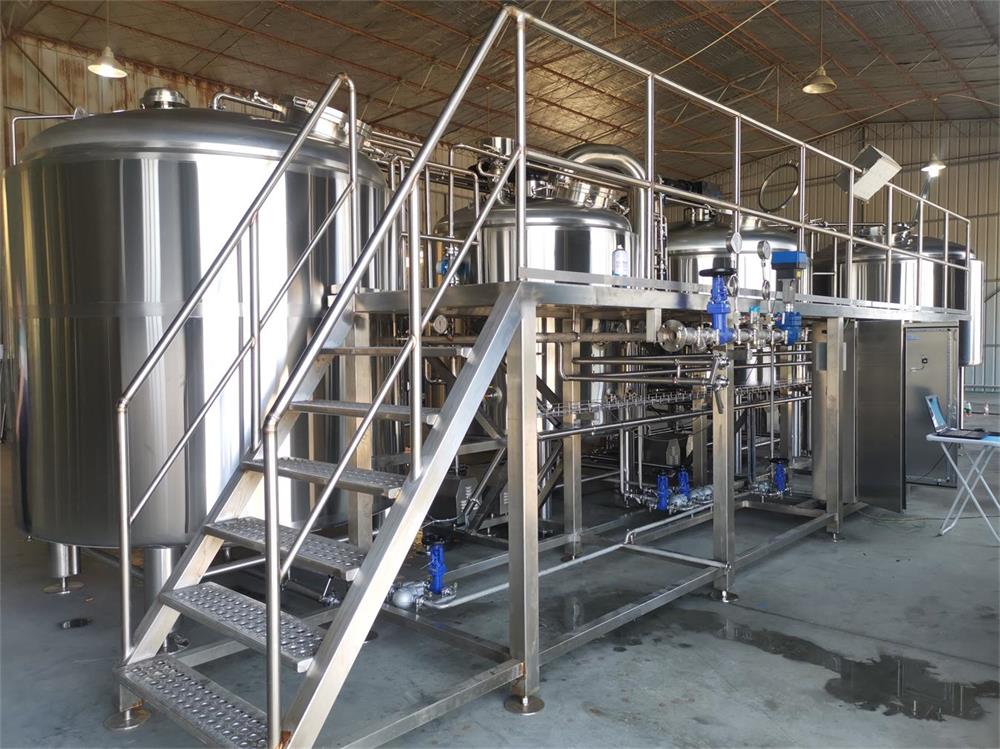
FAQs
This FAQ section addresses common questions regarding vessel brewing systems:
Q: What is the best vessel brewing system for beginners?
A: For beginners, a single vessel (BIAB) system is an excellent choice. It’s user-friendly, affordable, and requires minimal equipment. While offering less control over the brewing process compared to multi-vessel systems, BIAB systems are a fantastic way to get started in homebrewing and experiment with different recipes.
Q: How much space do I need for a vessel brewing system?
A: Space requirements vary depending on the system type and size. BIAB systems have the smallest footprint, while three-vessel systems with additional features like pumps and chillers will require more space. Measure your designated brewing area before purchasing a system to ensure it fits comfortably. Consider leaving enough room for maneuvering around the equipment during the brewing process.
Q: Can I upgrade my vessel brewing system in the future?
A: Many vessel brewing systems, particularly two-vessel and three-vessel setups, offer modularity. This allows you to add components like pumps, chillers, and automation systems as your brewing experience grows and your needs evolve. When choosing a system, consider its expandability to accommodate future upgrades.
Q: How long does it take to brew beer with a vessel system?
A: A typical brew day with a vessel system can take anywhere from 4 to 8 hours, depending on the complexity of the recipe and your experience level. The mashing stage typically takes the longest, followed by boiling, chilling, and cleaning.
Q: Is it difficult to clean a vessel brewing system?
A: Cleaning a vessel brewing system requires time and effort, but it’s an essential step to ensure high-quality beer and prevent contamination. Multiple vessel systems do involve cleaning more equipment compared to a BIAB system. However, most parts are constructed from stainless steel, making them easy to clean with hot water and sanitizer solutions. Some systems are even compatible with caustic cleaning solutions for a deeper clean.
Q: Where can I find recipes for vessel brewing systems?
A wealth of brewing resources are available online and in bookstores. Many homebrew supply stores also offer recipe kits specifically designed for vessel brewing systems. These kits typically include all the malt, hops, yeast, and instructions needed to brew a specific beer style.
Q: What safety precautions should I take when using a vessel brewing system?
- Always use your system in a well-ventilated area.
- Be cautious of hot liquids during the brewing process to avoid burns.
- Sanitize all equipment thoroughly before each use to prevent bacterial contamination.
- Ensure your kettle is placed on a stable surface that can handle the weight of the full kettle.
- If using a gas burner, follow proper safety guidelines for gas appliance use.
By following these tips and using common sense, you can enjoy a safe and rewarding homebrewing experience with your vessel brewing system.





